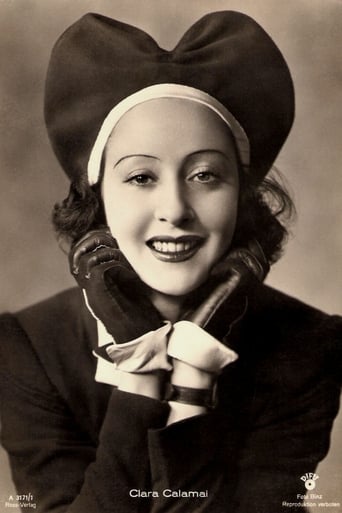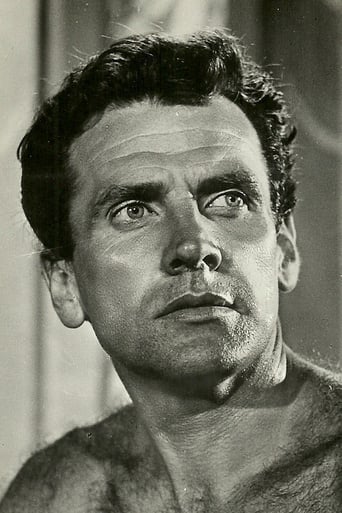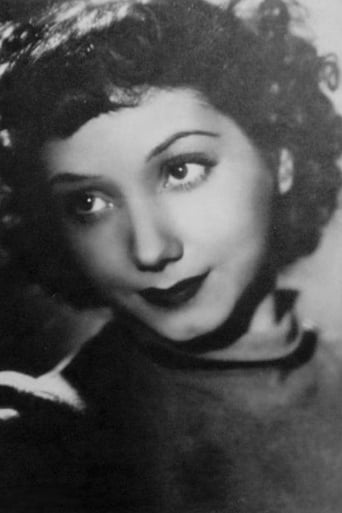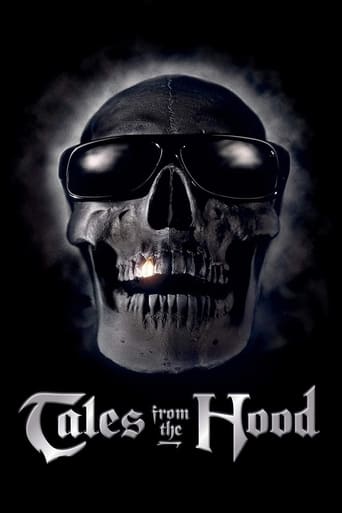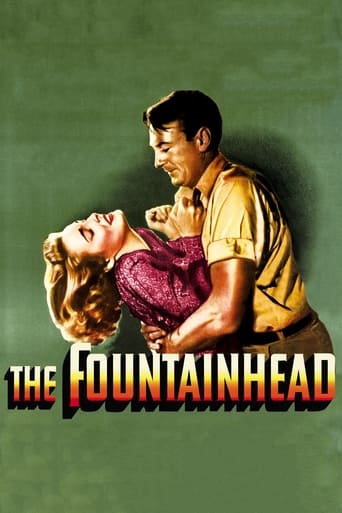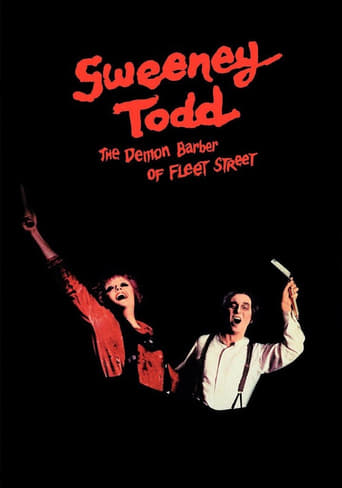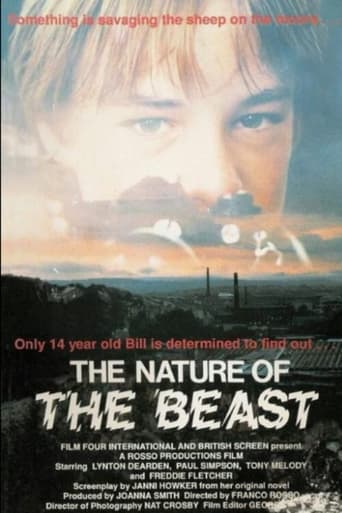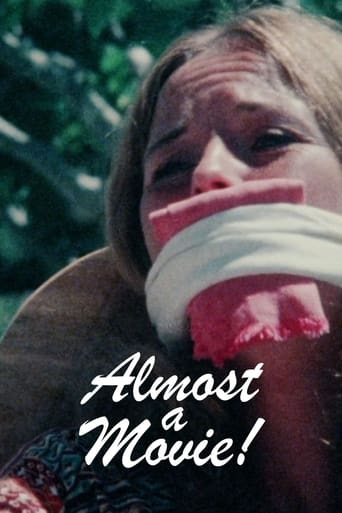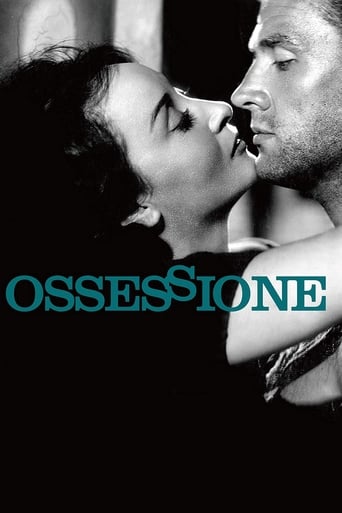

Ossessione (1977)
Gino, a drifter, begins an affair with inn-owner Giovanna as they plan to get rid of her older husband.
Watch Trailer
Cast
Similar titles


Reviews
Very well executed
Must See Movie...
Fantastic!
It's entirely possible that sending the audience out feeling lousy was intentional
I've always enjoyed the story that spawned two Hollywood adaptations, largely laden with sex, written by James M Cain, both called The Postman Always Rings Twice'. The first film made of it was the French 'Le Dernier Tournament', in 1939.Luchino Visconti's debut feature, here, 'Ossessione' is accredited as being the first of the Italian 'Neorealism' movement. As is widely known, Mussolini's censors banned the film and the Fascists burned the original negative. Visconti saved a print from destruction and may explain why this transfer (the only one?) looks similar to films we usually associate with those of the mid-late 1920's, it being so poor.Not only grainy, it almost pops in and out of focus and has scratches permanently weaving over it. The film flickers with changing amounts of light. The sound isn't much better. Despite all these technical deficiencies it is always hugely watchable and ultimately enjoyable.Unlike those two Hollywood versions, that as I said were sexed-up, Visconti's PG certificate version is a lot more innocent and stops at kissing, which is still quite daring for its time. The rest of the story is filled up to its 140 minutes with Italian life, its people and culture, all vibrantly shot and revealed and so, marks a real contrast with the U.S versions.The three key actors, Massimo Girotti as the handsome drifter (later played by John Garfield & Jack Nicolson), Clara Calamai as the beautiful wife (later, by Lana Turner & Jessica Lange) and Juan de Landa, the husband (later Cecil Kellaway & John Colicos) - are all well cast and play their parts well.Apparently, it was the way that the working-class were portrayed, with loose morals that upset the Fascist censors. Thank goodness this didn't put off Visconti who later went on to make some of the most noted films in Italian film history, such as The Leopard and Death In Venice.
Audiences today will probably watch a film like Ossessione and not really consider how unprecedented it was during the time when it came out. The structure of the film really divorces from sap-happy Hollywood conventionsas well as other major theatrical elements. It relies more upon depicting reality in a very grim and sober light. Films of this naturethe neo-realist filmswere made to reflect the darkness felt during post-World War II times. Ossessione tackles some fairly provocative issues that were probably unseen on screen prior to the war, including: adultery, conspiracy, murder, pregnancy, etc. Aside from the one crane shot and certain musical swelling moments, the film aesthetic is very raw and gritty: shot on-location, uses natural lighting and most likely non-popular actors. All of these elements helped convey the issues explored in the film, yielding the following theme: Negative karmic repercussions will haunt those who deliberately act immorally.The two leadsGino and Giovannaare polar opposites, yet both carry the mentality: we're bored and we want to be entertained. Gino is a drifter; a lone traveler who embraces life and its constant fluctuations. Giovanna is a bored house-wife cemented in the familiarly of marital permanence: she doesn't want to leave her home and husband, but would rather remain where she is because it's safer. Gino's lifestyle represents the ideal lifestyle Giovanna craves; the only difference is that she's too afraid to live it herselfthat's why she falls in love with Gino: he represents everything she wants but doesn't have the courage to get. She wants to live in a world free from the monotony of living with her corpulent husbandGino is the perfect ticket into that world. The affair that ensues between the two most likely left audiences back in the 40's feeling somewhat uneasy. I mean, films prior to the neo-realist age never showed such scandalous behavior on screen before. To say the least it was probably a bit alarming.In conjunction with the theme, the neo-realist style helps show the negative repercussions of adulterous behavior. Succinctly put, adulterous behavior (as shown in the film) leads to depressing and ultimately deadened lives. When Gino and Giovanna conspire with each other to "eliminate" Giovanna's husband, karma comes to haunt them like a plague after the deed is done. They return to their home: the atmosphere is dark and biting (as can be expected from the neo-realist style). They are not happy; they're actually more depressed. They thought that by eliminating Giovanna's husband that they'd live happier lives, but they were duped. The film ends with Giovanna's deathit being in karmic similitude of her husband's death. I think this is a very satisfying ending for several reasons. Here's why.There's a lot of talk as to whether or not evil should be depicted on screen, and if so, to what extent. I think depicting evil is very necessary if and only if the evil depicted is not being glorified, but rather shows what negative consequences evil actions have. As the subtext of Ossessione asks, is adultery and murder evil? I think the film eagerly responds yes! The adulterous behavior between the two reveals how unhappy they are. Ironically though, towards the end of the film when they seem to be healed of their depression and are seen basking in each other's arms inside the car, the author of the film shows that their happiness is, in fact, a façade: the car crashes off the cliff and into the river, killing Giovanna; the police arrest Gino. I think it was the author's intention to say that even though people sometimes try and justify their immoral behavior, in the end karma will come back to haunt them. I agree. I think the two got what was coming to them because they both were incredibly selfishalways wanting instant gratification and not willing to endure through hard times. This was especially made clear after the first sign of difficulty that Gino and Giovanna experience in their relationship: he can't handle the pressure of living in Giovanna's husband shadow, so he leaves Giovanna and sleeps with another girl. Such is typical of the insatiable, hedonistic personality.All in all, the film seemed very risky for its time. The audience, however, was prepared to see such a film because of the sobriety the war brought. Those pre-war, happy-go-lucky films were no longer being believed. Movie-going audiences were ready to see and contemplate difficult films with complex characters: they wanted to see characters whose lives were entangled in so-called 'sin' because it was a reflection of their own life problems. Ossessione, then, acts as a great catalyst for where the future of film was heading. That is, a lot of the naturalism pieces we see today can be said to have been influenced by the neo-realist film movement.
The Ruth Snyder - Judd Gray murder in 1927 inspired Ogden Nash to write a Broadway play called Machinal. More famously, it inspired James M. Cain to write two short novels which anyone who has actually reached the point where they are reading this review would be familiar with - Double Indemnity and The Postman Always Rings Twice. Both became film noir classics of the 1940's, Double Indemnity being arguably the most perfect noir ever made. Some of the real-life elements of the Snyder-Gray story were captured by Cain - the old age and indifference of Albert Gray, Ruth's high sex drive, Ruth and Judd's passionate affair and complicity in the murder and that famous double indemnity insurance clause. Missing elements included the fact that the actual setting was a very urban Manhattan - Albert Snyder being a respected newspaper editor. The numerous incompetent and failed attempts were also ignored in order to cut to the chase.Cain's Double Indemnity was filmed perfectly by Billy Wilder - let's ignore Stanwyck's ridiculous wig as one of those interesting accidents of film lore! The Postman Always Rings Twice, however, was filmed thrice and Ossessione, an Italian version and Luchino Visconti's first film, was the first of three versions. Before commenting on it, I'll recommend the Lana Turner - John Garfield version of 1946 in its entirety and five minutes of the 1981 Jack Nicholson - Jessica Lange version for the great sex scene on the dining table.Ossessione is not as noirish as The Postman Always Rings Twice. It has a strong neo-realist look which makes it a great movie, but a lot of the essential noir elements are missing. It does not have low-key lighting and unconventional camera angles. The dialog is not hard-boiled and instead the film concentrates more on characterization. This is the longest version of the story and goes deeply into characterization. Its also a lot more sexual than the Lana Turner version. We have a very obvious adulterous relationship and Giovanna is very obviously a nymphomaniac. A new character is introduced into the story - La Spagnola - with very obvious homosexual overtones. There is also a small, but very well-played role for a dancer who moonlights as a prostitute.This is a far greater study of the working class than of crime. The audience really gets the feeling of poverty and grime. The drifter is a complete tramp, the wife is no Lana Turner and may even have been a prostitute before marriage. Her husband is an obscene capitalist - obese, rude and arrogant. I think the casting was brilliant for this film. My only beef is with the overlong running time. Everything is drawn out too long and it would have been more effective if it had been more economical. Nevertheless, fans of noir and realism will definitely like Ossessione, as I did.
Unhappy people in unhappy circumstances. Gino is a drifter. Not because he has no talent. He is a lost soul looking for an undefined future and is determined to not be tied to anything until he finds his personal nirvana. Giovanna wants the security of being settled, but is unhappy with the man who made it possible. She too, is a lost soul in search of an undefined future. With only passion as a common denominator, they cast their lots with each other and start in motion a chain of events that brings none of the joys anticipated.Don't expect this movie to be a study of life in WWII Italy. Though made during the war, it is never an issue. Indeed, with the prevalence of young men throughout the movie, it is more likely an image of pre-war Italy. And although some reviewers speak of subtle references to homosexuality, such is unnecessary in describing the Spaniard. Identical scenes in American Westerns are understood to be simply friendship and the necessities of circumstance, i.e., one bed and two people in need of sleep.Every nuance of the movie hinges upon the passion of Gino and Giovanna, complicated by his desire to be going somewhere, anywhere, and her desire to remain settled. It's a traumatic but absorbing ride, even with the distraction of reading sub-titles.
